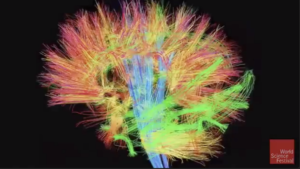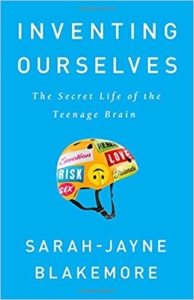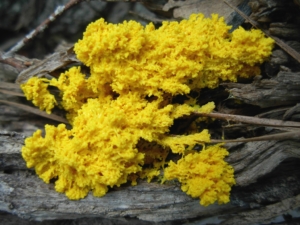Critical Neuroscience Workshop
McGill University
Summer Program in Social and Cultural Psychiatry
Summary
Part I: Rethinking Neuroscience
June 10–14, 2019
Last week I attended the tenth annual interdisciplinary Critical Neuroscience Workshop (June 10–14), hosted by neuroscientist Suparna Choudhury, at McGill University. The purpose of the workshop was to address the latest advances in cognitive neuroscience, in particular how neuroscientific information (often imperfectly) flows into, converges with, or diverges from local and global issues and concerns across academic disciplines, in the public sphere, and in how we understand our selves – both transforming non-neuroscientific objects of study and being transformed, or destabilized, by them. Under the leadership of Suparna and philosopher Jan Slaby (2012) the critical neuroscience project has evolved into a vital resource for interdisciplinarians, as evinced by the lively and deeply engaged group of scientists, physicians, researchers, scholars, and students in attendance – upcoming and established – from the social sciences, neurosciences, and humanities.

In her introduction, Suparna briefly covered recent developments in neuroscience, including efforts to manage and share huge repositories of data on what is increasingly viewed as a networked or digitized brain, an object (often rotating, always isolated) suggestive of vast computational and statistical complexity.
At the same time, the “wet” concept of neuroplasticity has popularized the idea that “we can work on our brains” to make them better (for recent examples, see, e.g., Innate: How the Wiring of Our Brains Shapes Who We Are [2018] by neurogeneticist Kevin Mitchell and Inventing Ourselves: The Secret Life of the Teenage Brain [2018] by cognitive neuroscientist Sarah-Jayne Blakemore ).

Suparna also discussed several functions of critique, which included “unsettling” hidden assumptions and de-centering the brain. She asked the group to consider what kind of interdisciplinarity we want to have with neuroscience and suggested we begin by exploring Ian Hacking’s (2006) notion of making up certain kinds of people, such as those living with autism spectrum disorder (ASD), the neuroreductionism this propensity for categorization entails, and the emerging concept of the “situated brain.”
Hacking’s basic idea is that people classified as “autistic,” for example, act differently “due to the differing content of the descriptions under which they act” (Mallon, p. 53). What’s more, according to workshop presenter Francisco Ortega (Instituto Medicine Social, Brazil) both mainstream (parent/professional) or neurodiversity (self-advocacy) approaches to ASD may appeal to neuroscience, but they do so in different ways, to underscore either a neurobiological disability or autism’s unique gifts. There is a reductionistic/homogenizing quality to both positins, but on closer examination Ortega found that these ideas play out differently in different historical, social, clinical, and political contexts. Ortega urged us to “move beyond dichotomies and polarizations” – such as disability/impairment controversies in Brazil (Rios & Andrada, 2015) – which tend to fade “when examined through the everyday life and practices” of people on the spectrum.
Cognitive neuroscientist Gillian Einstein’s approach – known as “situated neuroscience” – does exactly what Ortega suggests. By contextualizing research questions, methods, and, most importantly, participants, her research moves beyond simple binaries (M/F, Brain/Body). The basic premises underlying her approach are (1) brain, mind, body, and environment continuously interact; and (2) understanding those interactions requires integrating multiple perspectives – qualitative, quantitative, and physiological. As a case in point, Einstein, who’s at University of Toronto, discussed her research on female genital cutting and its embodied effects on the nervous system for Somali women now living in Toronto, in particular the sensation of pain. This work is unique in several ways, but what struck me most was its elucidation of feminist neuroscience virtues that we should all subscribe to, including the meaningfulness of the study to its participants, particularly the collaborative aspect, as well as the focus on each component of the brain-mind-body nexus in more or less equal measure, and the methodological richness.
Both Ortega and Einstein’s presentations on their specific engagements with neuroscience challenged its homogenizing aspects and re-situated the brain in the body and the local social world (Kirmayer & Gómez-Carrillo, 2019). The remainder of my post discusses three presentations by cognitive scientist/anthropologist Samuel Veissière, cultural psychiatrist Laurence Kirmayer, and cultural anthropologist Allan Young (all at McGill University) that provided the group with some theoretical perspective.
Veissière referred to Bourdieu’s distinction between expressed rules and conventions and what is left unsaid or all-that-is-taken-for-granted in any given context or society. How is this implicit cultural knowledge – the unsaid – internalized and how does it shape behavior? Veissière discussed a generative model (active inference; see also Veissière et al., 2019) based on the idea that the fundamentally social human brain functions in an anticipatory fashion, continuously using incoming sensory data and top-down predictions to optimize how we think through and behave with other people in a given cultural context.
Active inference is compatible with an emerging “4-E” approach to cognition. The brain functions in concert with the body (“embodied”); it’s located in and continuously interactive with the immediate social/cultural/material environment (“embedded” and “enactive”) in ways that “extend” beyond physical boundaries, particularly if we think about minds as networks (Sporns, 2010). As an example, Laurence Kirmayer discussed a recent essay he co-wrote with Ana Gómez-Carrillo (“Agency, Embodiment and Enactment in Pychosomatic Theory and Practice“), which focuses on resignation syndrome – a medically unexplainable disorder among refugee children in Sweden. Like Ortega, Kirmayer and Gómez-Carrillo resist dichotomous thinking. Unlike various partial explanations (medical, psychological, social), the 4-E approach integrates biological, social, and experiential aspects of the children’s shared predicament. This includes consideration of the available cultural affordances and constraints and the influence of Hacking’s interactive looping effects.
 Finally, Allan Young discussed the concept of the “liquid brain,” which goes one step further than the distributed cognition of the octopus (“Octopus Arms Are Capable of Making Decisions Without Input from Their Brains“). The liquid brain is not confined to individual organisms, but extends to cognitive networks involving interacting organisms, such as slime molds. The point, at least for me, was that these networks, and the rudimentary “emotions” that putatively motivate individual organisms to move about their world (Damasio, 2018), are part of our deep evolutionary history, and understanding them will help shed light on the extended brain and collective cognition.
Finally, Allan Young discussed the concept of the “liquid brain,” which goes one step further than the distributed cognition of the octopus (“Octopus Arms Are Capable of Making Decisions Without Input from Their Brains“). The liquid brain is not confined to individual organisms, but extends to cognitive networks involving interacting organisms, such as slime molds. The point, at least for me, was that these networks, and the rudimentary “emotions” that putatively motivate individual organisms to move about their world (Damasio, 2018), are part of our deep evolutionary history, and understanding them will help shed light on the extended brain and collective cognition.
References
Blakemore, S.-J. (2018). Inventing ourselves: The secret life of the teenage brain. New York, NY: Hachette.
Choudhury, S., & Slaby, J. (2012). Critical neuroscience: A handbook of the social and cultural contexts of neuroscience. Chichester, UK: Wiley Blackwell.
Hacking, I. (2006). Making people up: Clinical classifications. London Review of Books, 28(16–17). Retrieved from https://www.lrb.co.uk/v28/n16/contents
Kirmayer, L. J., & Gómez-Carrillo, A. (2019). Agency, embodiment and enactment in
psychosomatic theory and practice [Review essay]. Medical Humanities.
Rios, C., & Andrada, B. C. (2015). The changing face of autism in Brazil. Culture, Medicine, and Psychiatry, 39, 213–234.
Sporns, O. (2010). Networks of the brain. Cambridge, MA: MIT Press.
Veissière, S., Constant, A., Ramstead, M. J. D., Friston, K. A., & Kirmayer, L. J. (2019). Thinking through other minds: A variational approach to cognition and culture. Ms.


